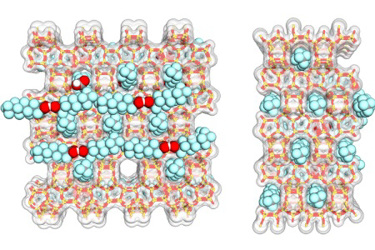New Filter Technology May Provide Solution To Fluorine Pollution

Bioscience engineers of KU Leuven have discovered a new method to filter harmful perfluorinated chemicals from water. So-called PFAS, used, for example, in non-stick pans and water-repellent clothing, do not degrade and accumulate in the environment, with potential health risks as a result.
Mid-August, a serious contamination was detected in the port of Antwerp. The culprit: PFAS (PerFluorinated Alkylated Substances). The name of this class of various chemical substances may not be particularly well-known, but its applications are. These include non-stick pans, fire extinguishing foams, food packaging, water-repellent clothing, etc. The substances are popular because of their chemical properties: they can resist high temperatures, corrosive products and electricity, and are water and dirt-repellent.
The other side of the coin, however, is that these chemical substances are so robust that they're not biologically degradable. That is why they’re called ‘forever chemicals’. Fluorine pollution is a wide spread issue; the chemicals disperse via the air and water, ending up in our food and drinking water. There is also evidence that PFAS can damage our health in the long term, as the substances are potentially carcinogenic and hormonally disruptive.
“The production of some types of PFAS has been more strictly regulated in recent years, but it hasn’t been completely curbed”, says Matthias Van den Bergh, researcher at the Department of Microbial and Molecular systems. “Because of the strict regulation, the industry is looking for other molecules with similar properties, but this is obviously not a solution to the fluorine pollution that has accumulated in nature in recent decades.”
Selective filter
The doctoral research of Matthias Van den Bergh, under the supervision of Professor Dirk De Vos and in collaboration with VITO, may provide a solution in the long term. “The big challenge is that these PFAS molecules are only present in the water in very low concentrations”, explains Professor De Vos. “In the case of heavy contaminations we’re talking about an order of magnitude of one microgram per litre. So it’s like trying to find a needle in a haystack.”
“Nevertheless, we have succeeded in developing an efficient filter material”, says Matthias Van den Bergh. “We're using a zeolite, a porous substance with tiny cavities. This material, in powdered form, attracts the PFAS molecules and traps them in its pores. The great thing about this technology is that it works very selectively: the harmful PFAS substances are filtered, but the other harmful components in the water are not.”
Further development
The researchers have patented the concept, but there is still a long way to go to achieve a working product, explains Professor Dirk De Vos. “We strongly believe in the possibilities of this material, but the challenge is to produce it on a large scale at a reasonable cost. We’re also going to further investigate in what way and in what form the filter is best used. So there’s no ready-made solution yet, but it is important that steps are taken to address this underexposed form of pollution.”
Source: KU Leuven
